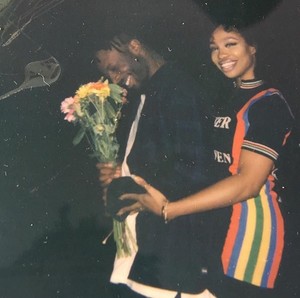POST ALL THINGS PRODUCTION THAT ARE HELPFUL AND HAVE HELPED YOU, FROM MUSIC THEORY, VST ADVICE, SOUND DESIGN TUTS, MIXING AND MASTERING TECHNIQUES, TIPS AND JUST ALL THINGS GOOD TO HELP BEGINNERS.
DON'T GATEKEEP, SHARE INFORMATION TO HELP OTHERS.
ALSO FOR DAWS AND TOOLS, NONE IS SUPERIOR WHATEVER YOU PREFER WORKS FOR YOU.
CAN THIS THREAD ALSO BE PINNEDI struggled with creating good baselines for a while (perhaps, because the frequencies are lower, my ear had trouble discerning the differences between relatively close frequencies, and some different notes sound too much alike).
Here's a technique that helped me with this: play a melody using piano keys instead (my go-to keys are the "Keys - We Never Die" preset in the free Iota Mini VST). Then simply replace the keys in your DAW with the appropriate bass sound.
Now that you have a starting bassline, if the melody you played with the keys is too complex for a bassline, you can delete notes here and there as you please. Similarly, if the melody you played with the keys has too few notes, now that you have a foundational melody, you can add notes as you please.
Hope that helps someone!
 StarCHaser
StarCHaserI struggled with creating good baselines for a while (perhaps, because the frequencies are lower, my ear had trouble discerning the differences between relatively close frequencies, and some different notes sound too much alike).
Here's a technique that helped me with this: play a melody using piano keys instead (my go-to keys are the "Keys - We Never Die" preset in the free Iota Mini VST). Then simply replace the keys in your DAW with the appropriate bass sound.
Now that you have a starting bassline, if the melody you played with the keys is too complex for a bassline, you can delete notes here and there as you please. Similarly, if the melody you played with the keys has too few notes, now that you have a foundational melody, you can add notes as you please.
Hope that helps someone!
GREAT TIP OMG
If anyone has Logic, depending on what year you got it in the demo projects are perfect to start on when learning mixing vocals. Take off all the effects and then try to get as close as you can to how it was before you took them off but with your plugins that you want to use.
A few techniques / tricks related to sampling:
1) It might be desirable for you to sidechain the kick and the sample (so that the sample decreases in volume each time the kick hits). Knxwledge, for example, does this a lot. You can hear it in this beat:

[Speaking of Knxwledge, another technique I learned from some of his tunes is, while it feels natural to play the snare on the 2 and the 4, you could also play the snare on the 2,3, and 4 and make it work! Here’s an easy-to-follow video on this:

]
2) You can make a beat by sampling a song and its reprise; these two tracks typically share some of the same melodies and sounds and will give you more variety to your beat. Here’s a pair of tracks like this:


You’ll hear the same string melodies occur in each song but with different noises accompanying them.
3) I found it tough to incorporate DJ scratches sampling different acapella chops in a song. For one, it’s tough to know off top what exact scratches you want. In FL Studio, here’s what I do to get around this: open up Fruity Scratcher, place an acapella chop in there, and just record audio of you playing around with the scratches, messing with tempo, etc. Then, sample the audio you just recorded! It’ll help you pick out the exact scratches that you want and discard the rest.
 StarCHaser
StarCHaserA few techniques / tricks related to sampling:
1) It might be desirable for you to sidechain the kick and the sample (so that the sample decreases in volume each time the kick hits). Knxwledge, for example, does this a lot. You can hear it in this beat:
!https://youtu.be/eHx1EWiw4R0[Speaking of Knxwledge, another technique I learned from some of his tunes is, while it feels natural to play the snare on the 2 and the 4, you could also play the snare on the 2,3, and 4 and make it work! Here’s an easy-to-follow video on this:
!https://youtu.be/pcejXDem41U]
2) You can make a beat by sampling a song and its reprise; these two tracks typically share some of the same melodies and sounds and will give you more variety to your beat. Here’s a pair of tracks like this:
!https://youtu.be/jllqzVubR2I!https://youtu.be/cfeLnQXPWT4You’ll hear the same string melodies occur in each song but with different noises accompanying them.
3) I found it tough to incorporate DJ scratches sampling different acapella chops in a song. For one, it’s tough to know off top what exact scratches you want. In FL Studio, here’s what I do to get around this: open up Fruity Scratcher, place an acapella chop in there, and just record audio of you playing around with the scratches, messing with tempo, etc. Then, sample the audio you just recorded! It’ll help you pick out the exact scratches that you want and discard the rest.
nice this is amazing advice
 StarCHaser
StarCHaserA few techniques / tricks related to sampling:
1) It might be desirable for you to sidechain the kick and the sample (so that the sample decreases in volume each time the kick hits). Knxwledge, for example, does this a lot. You can hear it in this beat:
!https://youtu.be/eHx1EWiw4R0[Speaking of Knxwledge, another technique I learned from some of his tunes is, while it feels natural to play the snare on the 2 and the 4, you could also play the snare on the 2,3, and 4 and make it work! Here’s an easy-to-follow video on this:
!https://youtu.be/pcejXDem41U]
2) You can make a beat by sampling a song and its reprise; these two tracks typically share some of the same melodies and sounds and will give you more variety to your beat. Here’s a pair of tracks like this:
!https://youtu.be/jllqzVubR2I!https://youtu.be/cfeLnQXPWT4You’ll hear the same string melodies occur in each song but with different noises accompanying them.
3) I found it tough to incorporate DJ scratches sampling different acapella chops in a song. For one, it’s tough to know off top what exact scratches you want. In FL Studio, here’s what I do to get around this: open up Fruity Scratcher, place an acapella chop in there, and just record audio of you playing around with the scratches, messing with tempo, etc. Then, sample the audio you just recorded! It’ll help you pick out the exact scratches that you want and discard the rest.
you inspired me to take my craft to another level man.
gonna use a few techniques here and there.
been working on a few techniques when it comes to the 808 slides. basic trap drum patterns. even the dilla drum patterns.
working on being more efficient and using a drum synth with midi patterns.
I think it depends on the daw. I usually produce in double time so the dilla vibe is on 3 1 and 3.
I just started producing a little under 2 months ago and I feel like one of my biggest issues still is my workflow. I am mainly focusing on sampling and I am wondering if anyone has any tips regarding their methods and workflows when it comes to chopping up a song
 GOLDMOUFDAWG
GOLDMOUFDAWGI just started producing a little under 2 months ago and I feel like one of my biggest issues still is my workflow. I am mainly focusing on sampling and I am wondering if anyone has any tips regarding their methods and workflows when it comes to chopping up a song
If it helps you, I now ALWAYS start with a drum loop that I can come up with first. It helps me start with a rhythm that I can then thumb out the chops to follow suit with.




